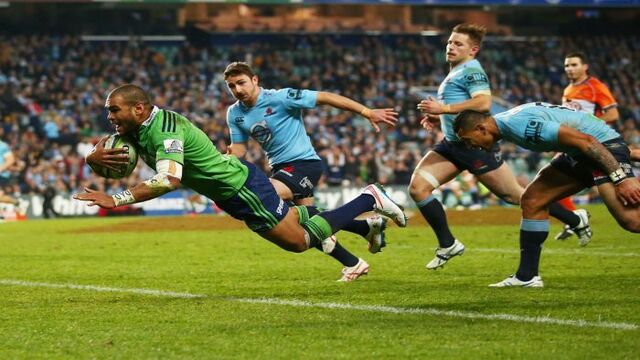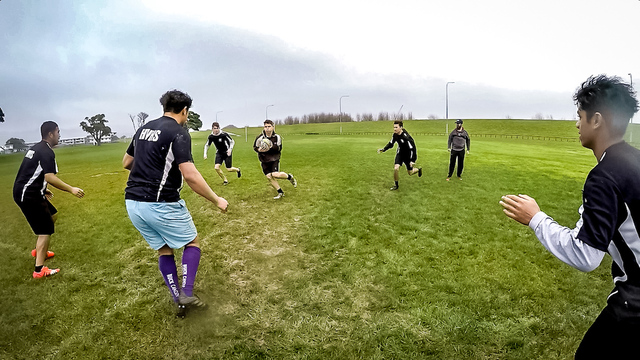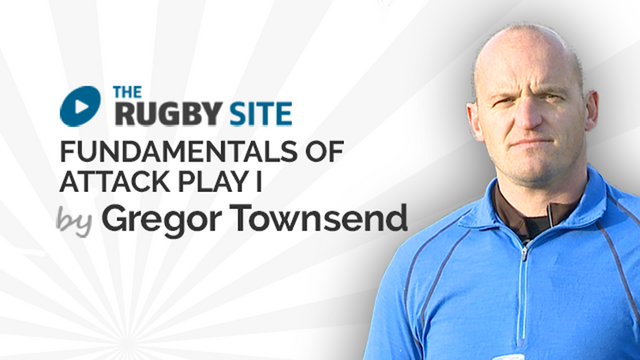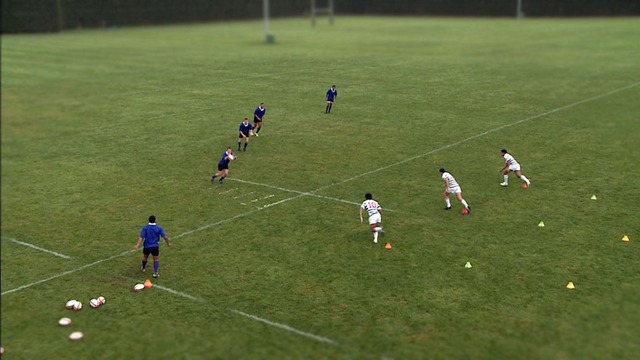The importance of ‘reloading’ and understanding space
In his seminal training session on The Rugby Site, Scotland head coach Gregor Townsend outlines his attacking philosophy as follows:
“My coaching philosophy is based on what I learned as a player and what drove me as a player – and that’s finding space on a rugby field."
“I believe there’s always space on a rugby field, no matter how organized defences are. The purpose of all attacking play is to discover where defences are weak.”
Space is a commodity in short supply in the modern professional game, particularly in the structured parts of the game close to set-piece.
How do you find the spaces which Townsend claims are always there, at times when the defence is still likely to be cohesive and well-organized?
The answer to that question is connected to the issue of ‘reloading’. How do players from both sides reposition themselves after a stopping point in play (a ruck or breakdown)? How hard do they work to find a new space in which to attack or defend, and how accurately do they regroup? How determined are they to make that second effort?
The recent Super Rugby quarter final between the Waratahs and Highlanders in Sydney contained two excellent examples of how to exploit re-positionings after a ruck has been formed.
Both examples derived from four-phase attacks with a lineout starter.
The first instance occurred in the 10th minute of the match, from a Highlanders throw right on halfway. On 1st phase the Highlanders set a straightforward midfield target off a run by their centre Rob Thompson, following it up with a short pick and go off the base by number 8 Luke Whitelock.
Let’s pick up the action on 3rd phase thereafter, from the most revealing angle in behind the posts:
After the Whitelock pick up the middle, all of the Highlanders attackers bar right wing Waisake Naholo are on (their) middle/left of the field, so the first significant regrouping is the movement of one of the Waratah centres (Kurtley Beale) back to that side to provide additional cover:

By the end of the next phase, a short drive off 9 to the same side, Beale has arrived inside the Tahs right wing Alex Newsome, while the Highlanders all still appear to be comfortably inside their mid-left attacking ‘box’:

Perhaps the only small hint of trouble to come is the movement of the Highlanders’ number 7 James Lentjes, reloading back to the opposite side to Beale underneath Naholo.
On 3rd phase, the whole complexion of play changes dramatically. On defence, three Waratahs have been consumed at the tackle while one other forward wraps around to the Beale side. The defensive sweeper (Tahs scrum-half Nick Phipps) also drifts out the same way.
On attack, reloading momentum is taking players in the opposite direction. Lentjes has completed his relocation inside Naholo and number 12 Teihorangi Walden has widened his position to connect the attacking line out to the right. When number 10 Lima Sopoaga receives the ball from Aaron Smith, all of a sudden there is a six to four advantage in numbers for the offence:

With Bernard Foley drifting out too far, Sopoaga is able to take the gap underneath him and set up the scoring opportunity for Naholo. On the Highlanders left meanwhile, there are only two attackers left facing five unemployed Waratah defenders!
The success of the sequence is mainly due to contrasting reads and reloads on both sides of the ball. The Waratahs read an attack over their right side and regroup in that area, when the Highlanders’ chief play-maker Lima Sopoaga has shifted in the opposite direction.
It is crucially, the repositioning work done by Lentjes and Walden off the ball which makes Sopoaga’s decision count for a full seven points.
The second example stemmed from a lineout in the 24th minute. Once again the Highlanders start by hitting up in midfield, in this instance to commit the Waratahs’ outside centre Curtis Rona on 1st phase:

Play staggers outside, via a bounced pass, to the far side-line on 2nd phase. One phase later, another forward drive off 9 find Rona as the tackler for a second time in the sequence:

At this stage, play is located over on the Waratahs’ right 15 metre line, and there is a question about why Rona is the man making the tackle in this situation. Typically he would regroup to the open-side of the field to provide cover in the wide channels, and leave the forwards to tackle their opposite numbers.
The Waratahs are immediately made to pay the price for Rona’s failure to reload to the critical area. Here is the key 4th phase from behind the posts:
With Rona out of play and Kurtley Beale also defending near the ruck, the Waratahs have only Foley and left wing Taquele Naiyaravoro left to defend a full Highlander back-line plus Lentjes in his customary spot inside Naholo, and it is not nearly enough.
Summary
How quickly can we identify the space, and reload to exploit it on attack? That is the key question for the offence, especially when play is relatively structured.
How accurately can we read opposing intentions, and regroup on the right side of the ruck after one phase ends, and before another begins? That is the key question for the defence.
There are a succession of efforts and choices to be made on both sides of the ball.
It is partly a matter of counting numbers, but more importantly a matter of getting the right bodies in the right place to perform their core duties.
As Gregor Townsend says in his module, there is always space available to the attack, however well-organized the defence or however close to set-piece the play. But without the effort to work off the ball tirelessly and intelligently, it will never be found – and you’ll be left pondering Vince Lombardi’s universal question to sportspeople, “Why didn’t you make the second effort?”








.jpg)


.jpg)










